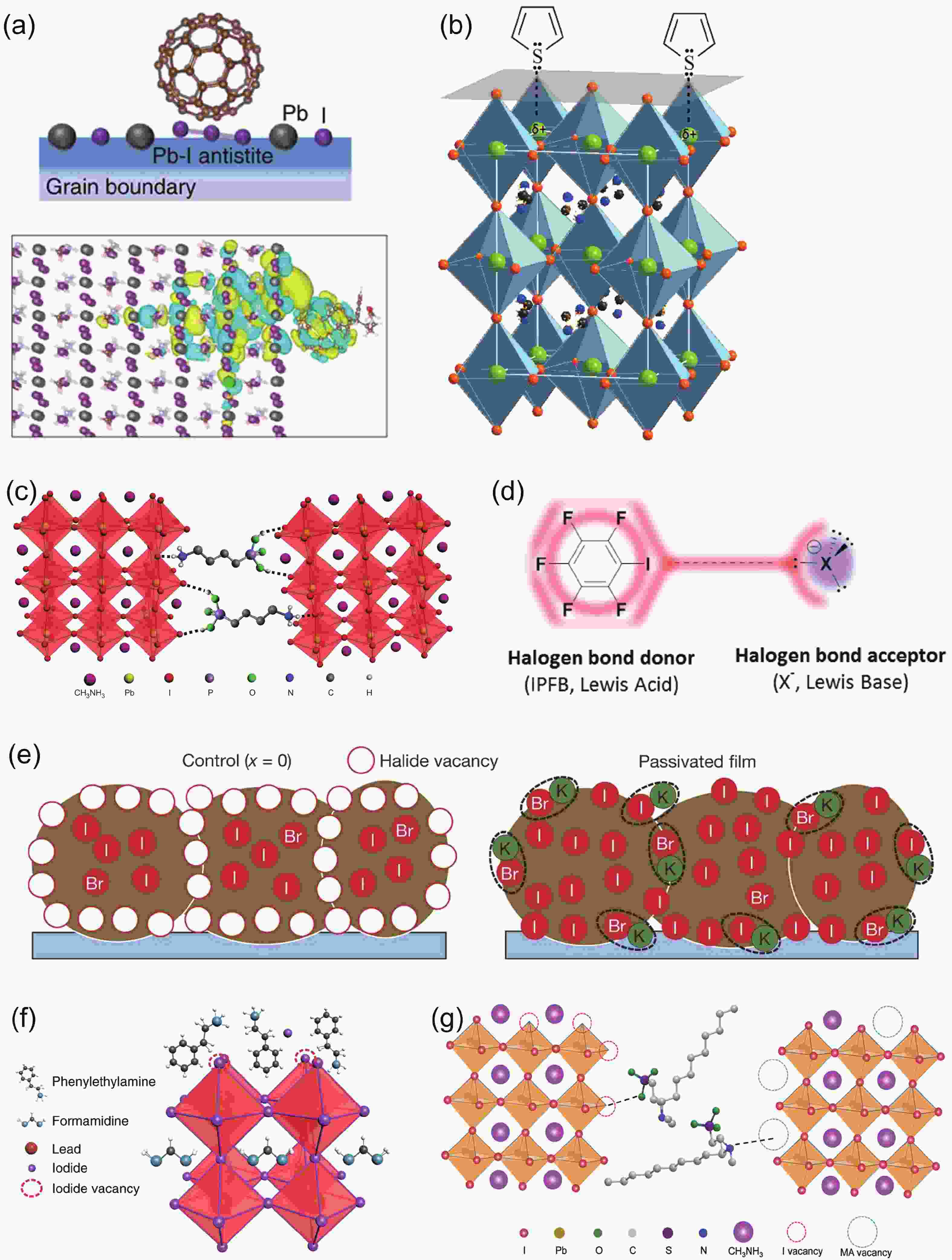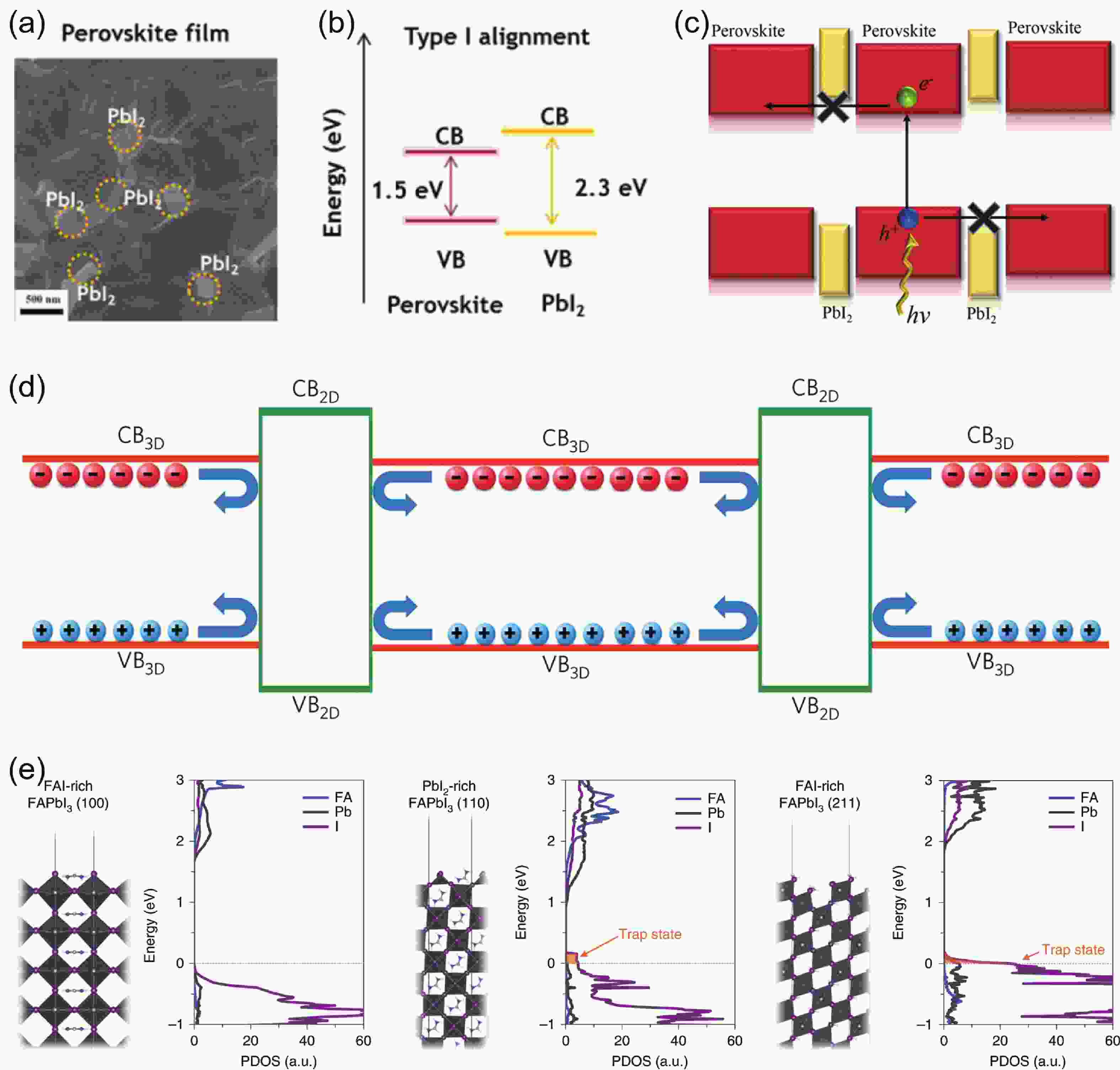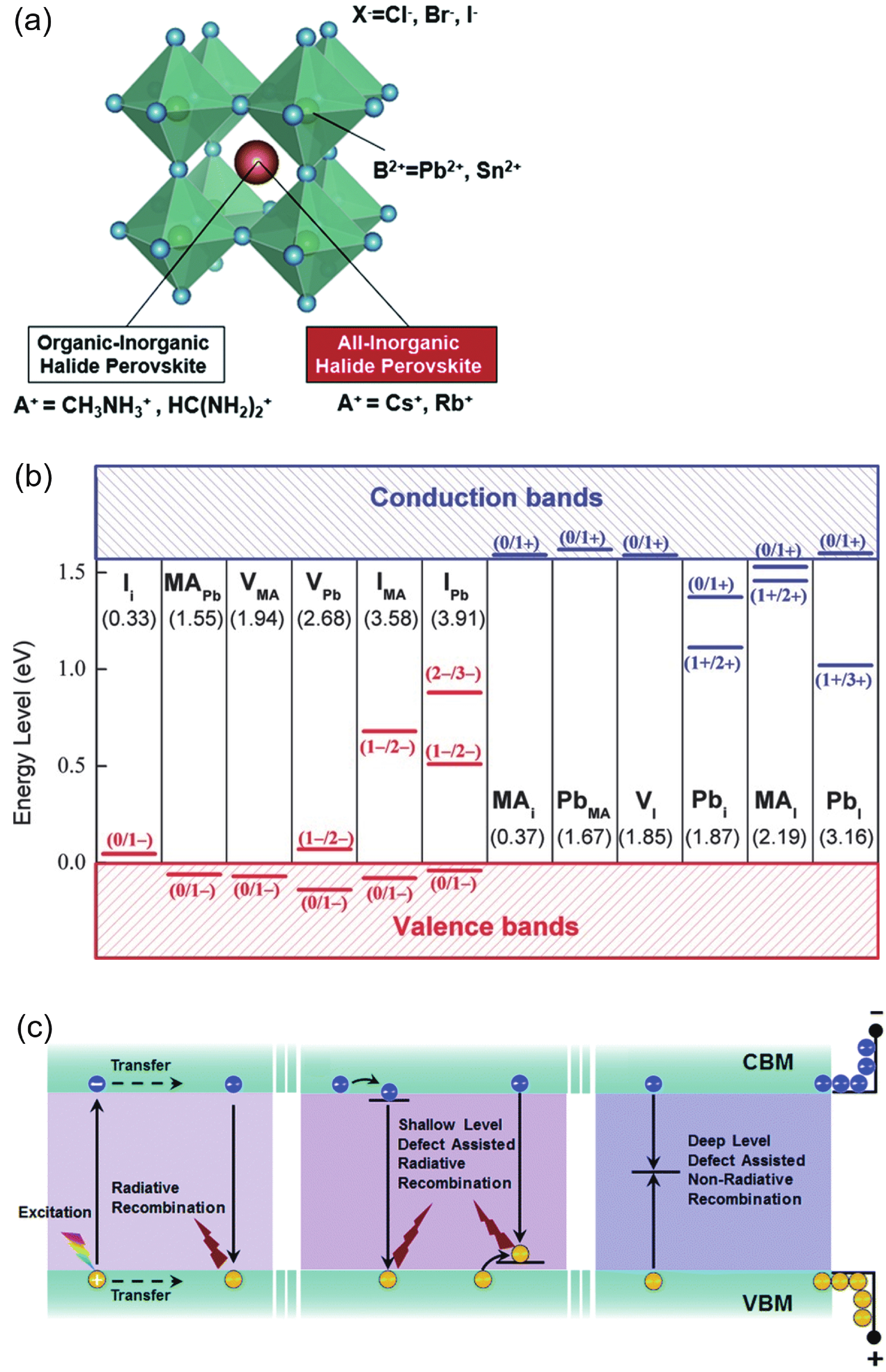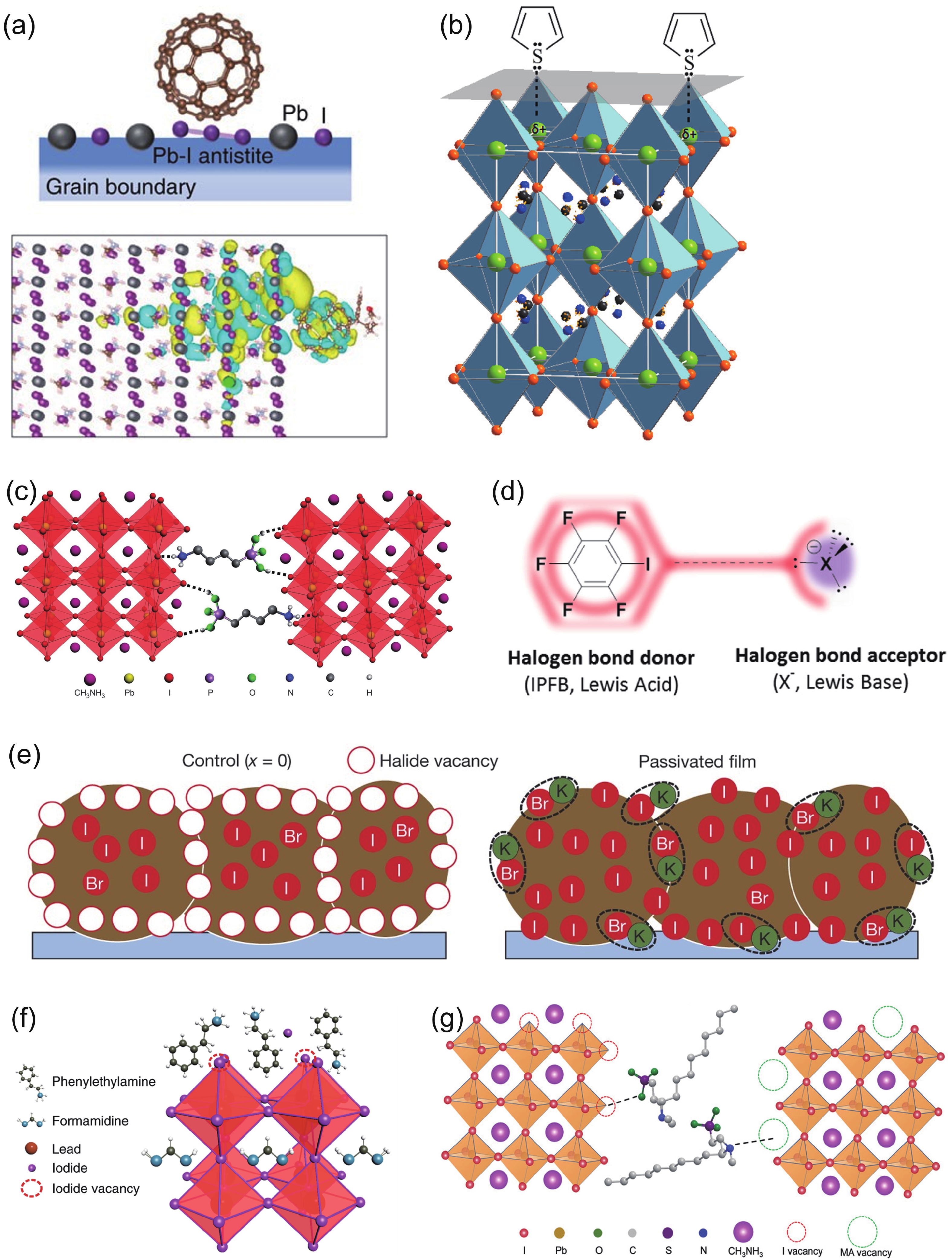| Citation: |
Zhimin Fang, Jie Sun, Shengzhong (Frank) Liu, Liming Ding. Defects in perovskite crystals[J]. Journal of Semiconductors, 2023, 44(8): 080201. doi: 10.1088/1674-4926/44/8/080201
Z M Fang, J Sun, S Z Liu, L M Ding. Defects in perovskite crystals[J]. J. Semicond, 2023, 44(8): 080201. doi: 10.1088/1674-4926/44/8/080201
Export: BibTex EndNote
|
-
References
[1] Zhang L X, Pan X Y, Liu L, et al. Star perovskite materials. J Semicond, 2022, 43, 030203 doi: 10.1088/1674-4926/43/3/030203[2] NREL, "Best Research-cell Efficiency Chart, " www. nrel. gov/pv/ cell- effic iency. html Accessed: Jun 2023[3] Zhou Y Y, Zhao Y X. Chemical stability and instability of inorganic halide perovskites. Energy Environ Sci, 2019, 12, 1495 doi: 10.1039/C8EE03559H[4] Yin W J, Shi T T, Yan Y F. Unique properties of halide perovskites as possible origins of the superior solar cell performance. Adv Mater, 2014, 26, 4653 doi: 10.1002/adma.201306281[5] Ran C X, Xu J T, Gao W Y, et al. Defects in metal triiodide perovskite materials towards high-performance solar cells: origin, impact, characterization, and engineering. Chem Soc Rev, 2018, 47, 4581 doi: 10.1039/C7CS00868F[6] Chen B, Rudd P N, Yang S, et al. Imperfections and their passivation in halide perovskite solar cells. Chem Soc Rev, 2019, 48, 3842 doi: 10.1039/C8CS00853A[7] Xu J X, Buin A, Ip A H, et al. Perovskite-fullerene hybrid materials suppress hysteresis in planar diodes. Nat Commun, 2015, 6, 7081 doi: 10.1038/ncomms8081[8] Shao Y C, Xiao Z G, Bi C, et al. Origin and elimination of photocurrent hysteresis by fullerene passivation in CH3NH3PbI3 planar heterojunction solar cells. Nat Commun, 2014, 5, 5784 doi: 10.1038/ncomms6784[9] Noel N K, Abate A, Stranks S D, et al. Enhanced photoluminescence and solar cell performance via lewis base passivation of organic-inorganic lead halide perovskites. ACS Nano, 2014, 8, 9815 doi: 10.1021/nn5036476[10] Wang F, Geng W, Zhou Y, et al. Phenylalkylamine passivation of organolead halide perovskites enabling high-efficiency and air-stable photovoltaic cells. Adv Mater, 2016, 28, 9986 doi: 10.1002/adma.201603062[11] Yang S, Dai J, Yu Z H, et al. Tailoring passivation molecular structures for extremely small open-circuit voltage loss in perovskite solar cells. J Am Chem Soc, 2019, 141, 5781 doi: 10.1021/jacs.8b13091[12] Li W Z, Dong H P, Guo X D, et al. Graphene oxide as dual functional interface modifier for improving wettability and retarding recombination in hybrid perovskite solar cells. J Mater Chem A, 2014, 2, 20105 doi: 10.1039/C4TA05196C[13] Cai Y, Cui J, Chen M, et al. Multifunctional enhancement for highly stable and efficient perovskite solar cells. Adv Funct Mater, 2021, 31, 2005776 doi: 10.1002/adfm.202005776[14] Lin Y Z, Shen L, Dai J, et al. π-conjugated lewis base: Efficient trap-passivation and charge-extraction for hybrid perovskite solar cells. Adv Mater, 2017, 29, 1604545 doi: 10.1002/adma.201604545[15] Jiang J X, Wang Q, Jin Z W, et al. Polymer doping for high-efficiency perovskite solar cells with improved moisture stability. Adv Energy Mater, 2018, 8, 1701757 doi: 10.1002/aenm.201701757[16] Zuo L J, Guo H X, deQuilettes D W, et al. Polymer-modified halide perovskite films for efficient and stable planar heterojunction solar cells. Sci Adv, 2017, 3, e1700106 doi: 10.1126/sciadv.1700106[17] Bi D Q, Yi C Y, Luo J S, et al. Polymer-templated nucleation and crystal growth of perovskite films for solar cells with efficiency greater than 21%. Nat Energy, 2016, 1, 16142 doi: 10.1038/nenergy.2016.142[18] Li X, Dar M I, Yi C Y, et al. Improved performance and stability of perovskite solar cells by crystal crosslinking with alkylphosphonic acid ω-ammonium chlorides. Nat Chem, 2015, 7, 703 doi: 10.1038/nchem.2324[19] Meng X Y, Lin J B, Liu X, et al. Highly stable and efficient FASnI3-based perovskite solar cells by introducing hydrogen bonding. Adv Mater, 2019, 31, 1903721 doi: 10.1002/adma.201903721[20] Wang R, Xue J J, Wang K L, et al. Constructive molecular configurations for surface-defect passivation of perovskite photovoltaics. Science, 2019, 366, 1509 doi: 10.1126/science.aay9698[21] Gong C, Zhang C, Zhuang Q X, et al. Stabilizing buried interface via synergistic effect of fluorine and sulfonyl functional groups toward efficient and stable perovskite solar cells. Nanomicro Lett, 2022, 15, 17 doi: 10.1007/s40820-022-00992-5[22] Abate A, Saliba M, Hollman D J, et al. Supramolecular halogen bond passivation of organic-inorganic halide perovskite solar cells. Nano Lett, 2014, 14, 3247 doi: 10.1021/nl500627x[23] Metrangolo P, Canil L, Abate A, et al. Halogen bonding in perovskite solar cells: A new tool for improving solar energy conversion. Angew Chem Int Ed, 2022, 61, e202114793 doi: 10.1002/anie.202114793[24] Ren G H, Han W B, Zhang Q, et al. Overcoming perovskite corrosion and de-doping through chemical binding of halogen bonds toward efficient and stable perovskite solar cells. Nano-Micro Lett, 2022, 14, 175 doi: 10.1007/s40820-022-00916-3[25] Zhang C Y, Shen X Q, Chen M J, et al. Constructing a stable and efficient buried heterojunction via halogen bonding for inverted perovskite solar cells. Adv Energy Mater, 2023, 13, 2203250 doi: 10.1002/aenm.202203250[26] Li N X, Tao S X, Chen Y H, et al. Cation and anion immobilization through chemical bonding enhancement with fluorides for stable halide perovskite solar cells. Nat Energy, 2019, 4, 408 doi: 10.1038/s41560-019-0382-6[27] Cao J, Tao S X, Bobbert P A, et al. Interstitial occupancy by extrinsic alkali cations in perovskites and its impact on ion migration. Adv Mater, 2018, 30, 1707350 doi: 10.1002/adma.201707350[28] Abdi-Jalebi M, Andaji-Garmaroudi Z, Cacovich S, et al. Maximizing and stabilizing luminescence from halide perovskites with potassium passivation. Nature, 2018, 555, 497 doi: 10.1038/nature25989[29] Jiang Q, Zhao Y, Zhang X W, et al. Surface passivation of perovskite film for efficient solar cells. Nat Photon, 2019, 13, 460 doi: 10.1038/s41566-019-0398-2[30] Lin R X, Xu J, Wei M Y, et al. All-perovskite tandem solar cells with improved grain surface passivation. Nature, 2022, 603, 73 doi: 10.1038/s41586-021-04372-8[31] Zheng X P, Deng Y H, Chen B, et al. Dual functions of crystallization control and defect passivation enabled by sulfonic zwitterions for stable and efficient perovskite solar cells. Adv Mater, 2018, 30, 1803428 doi: 10.1002/adma.201803428[32] Zheng X P, Chen B, Dai J, et al. Defect passivation in hybrid perovskite solar cells using quaternary ammonium halide anions and cations. Nat Energy, 2017, 2, 17102 doi: 10.1038/nenergy.2017.102[33] Kim J H, Kim Y R, Park B, et al. Simultaneously passivating cation and anion defects in metal halide perovskite solar cells using a zwitterionic amino acid additive. Small, 2021, 17, 2005608 doi: 10.1002/smll.202005608[34] Chen Q, Zhou H P, Song T B, et al. Controllable self-induced passivation of hybrid lead iodide perovskites toward high performance solar cells. Nano Lett, 2014, 14, 4158 doi: 10.1021/nl501838y[35] Jacobsson T J, Correa-Baena J P, Anaraki E H, et al. Unreacted PbI2 as a double-edged sword for enhancing the performance of perovskite solar cells. J Am Chem Soc 2016, 138, 10331 doi: 10.1021/jacs.6b06320[36] Wang Z P, Lin Q Q, Chmiel F P, et al. Efficient ambient-air-stable solar cells with 2D–3D heterostructured butylammonium-caesium-formamidinium lead halide perovskites. Nat Energy, 2017, 2, 17135 doi: 10.1038/nenergy.2017.135[37] Yu D N, Wei Q, Li H S, et al. Quasi-2D bilayer surface passivation for high efficiency narrow bandgap perovskite solar cells. Angew Chem Int Ed, 2022, 61, e202202346 doi: 10.1002/anie.202202346[38] Leblebici S Y, Leppert L, Li Y B, et al. Facet-dependent photovoltaic efficiency variations in single grains of hybrid halide perovskite. Nat Energy, 2016, 1, 16093 doi: 10.1038/nenergy.2016.93[39] Fang Z M, Yan N, Liu S Z. Modulating preferred crystal orientation for efficient and stable perovskite solar cells—From progress to perspectives. InfoMat, 2022, 4, e12369 doi: doi.org/10.1002/inf2.12369[40] Zheng X P, Hou Y, Bao C X, et al. Managing grains and interfaces via ligand anchoring enables 22.3%-efficiency inverted perovskite solar cells. Nat Energy, 2020, 5, 131 doi: 10.1038/s41560-019-0538-4[41] Yan N, Ren X D, Fang Z M, et al. Ligand-anchoring-induced oriented crystal growth for high-efficiency lead-tin perovskite solar cells. Adv Funct Mater, 2022, 32, 2201384 doi: 10.1002/adfm.202201384[42] Li J G, Yan N, Fang Z M, et al. Alkyl diamine-induced (100)-preferred crystal orientation for efficient Pb–Sn perovskite solar cells. ACS Appl Energy Mater, 2022, 5, 6936 doi: 10.1021/acsaem.2c00587[43] Ma C Q, Eickemeyer F T, Lee S H, et al. Unveiling facet-dependent degradation and facet engineering for stable perovskite solar cells. Science, 2023, 379, 173 doi: 10.1126/science.adf3349[44] Ma C Q, Grätzel M, Park N G. Facet engineering for stable, efficient perovskite solar cells. ACS Energy Lett, 2022, 7, 3120 doi: 10.1021/acsenergylett.2c01623[45] Luo C, Zheng G H J, Gao F, et al. Facet orientation tailoring via 2D-seed-induced growth enables highly efficient and stable perovskite solar cells. Joule, 2022, 6, 240 doi: 10.1016/j.joule.2021.12.006 -
Proportional views





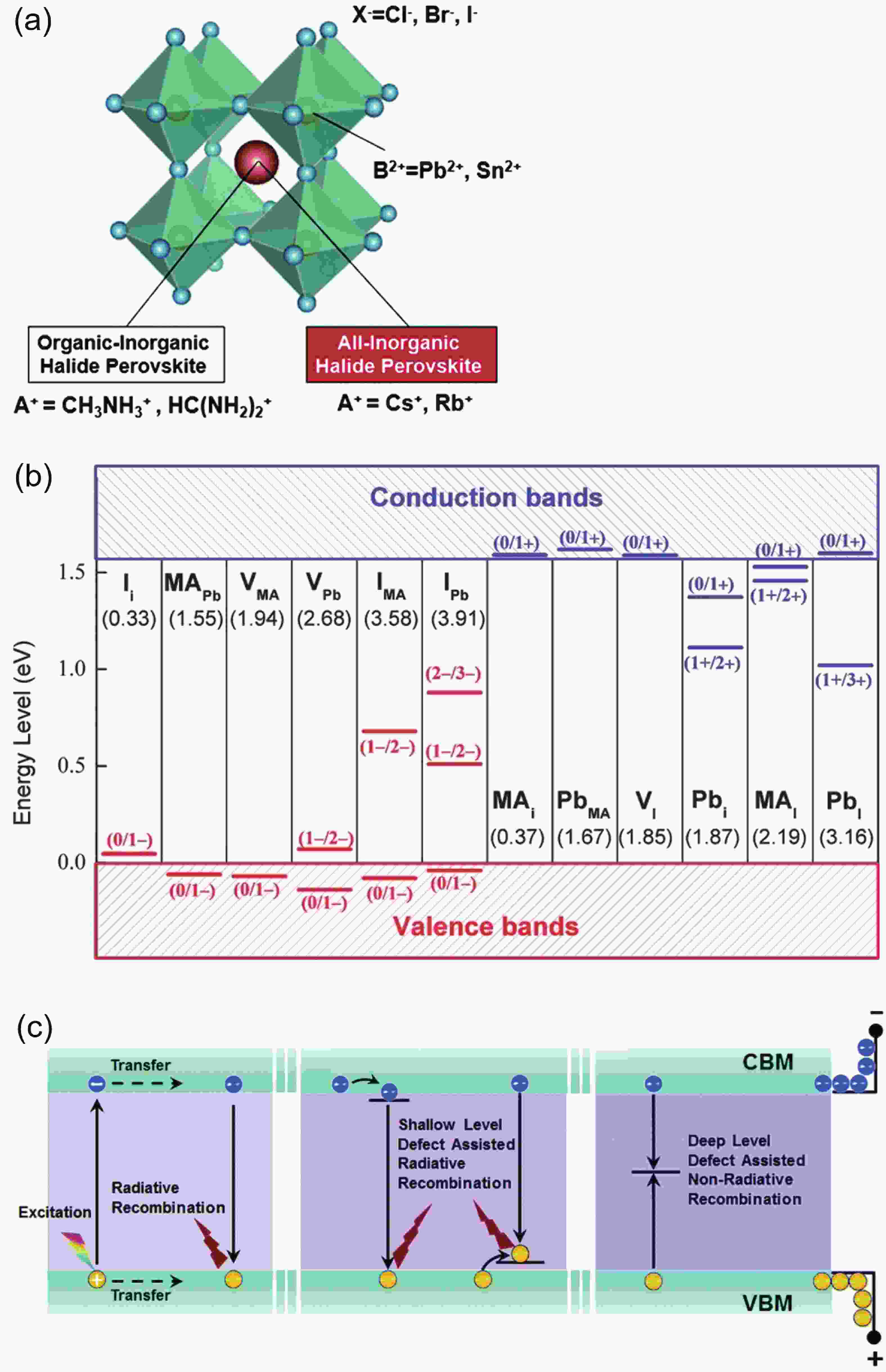
 DownLoad:
DownLoad:
